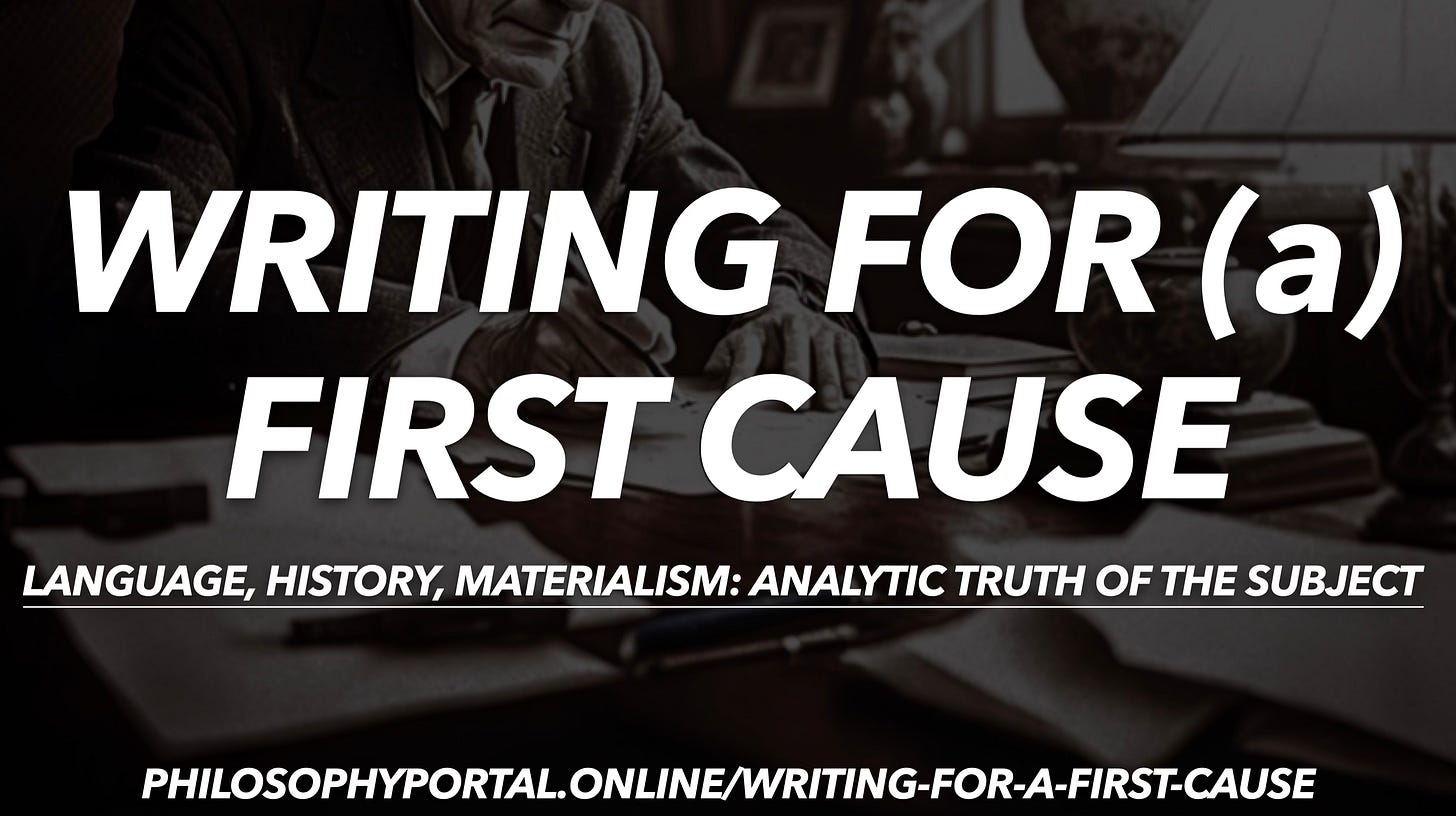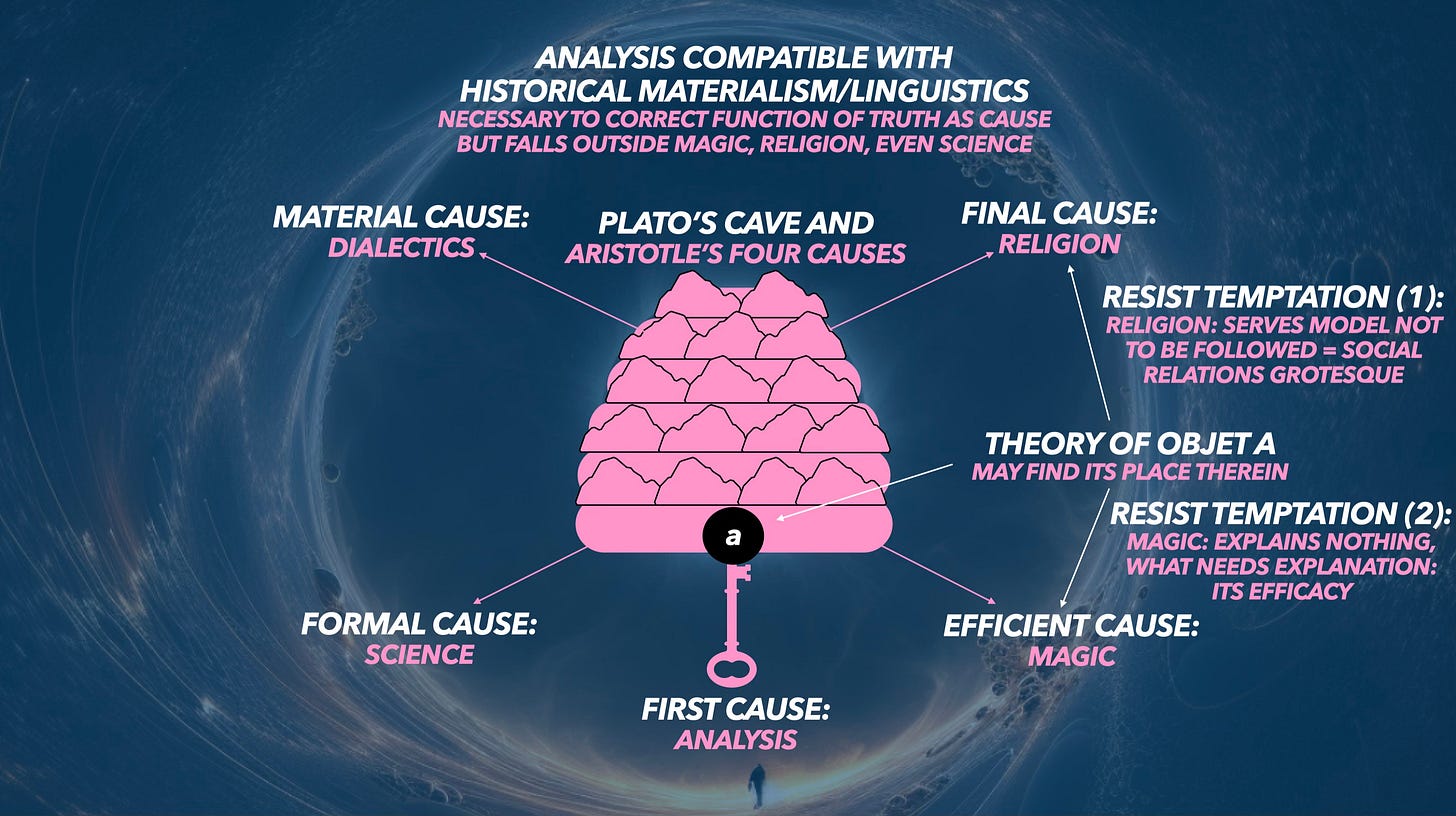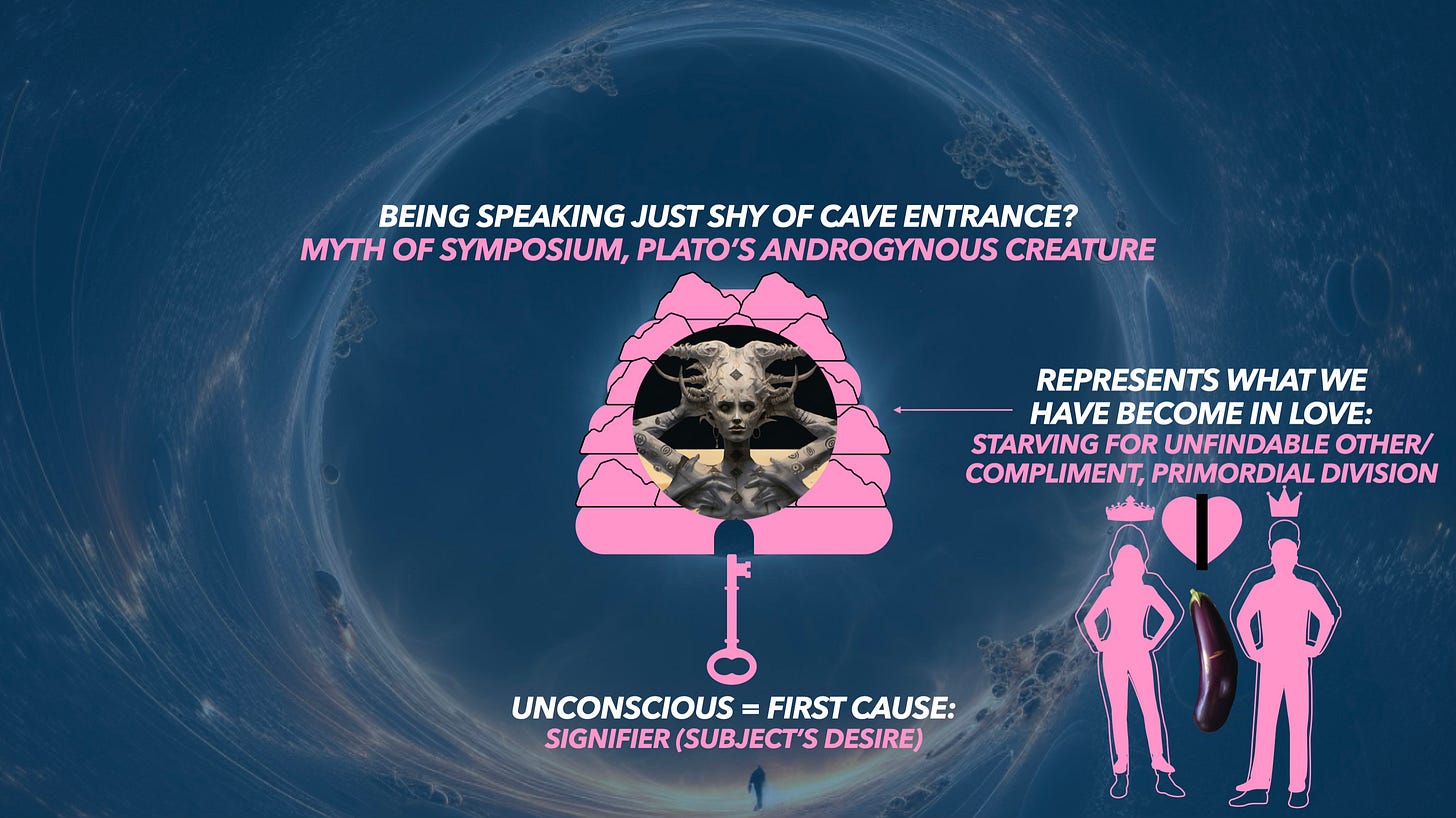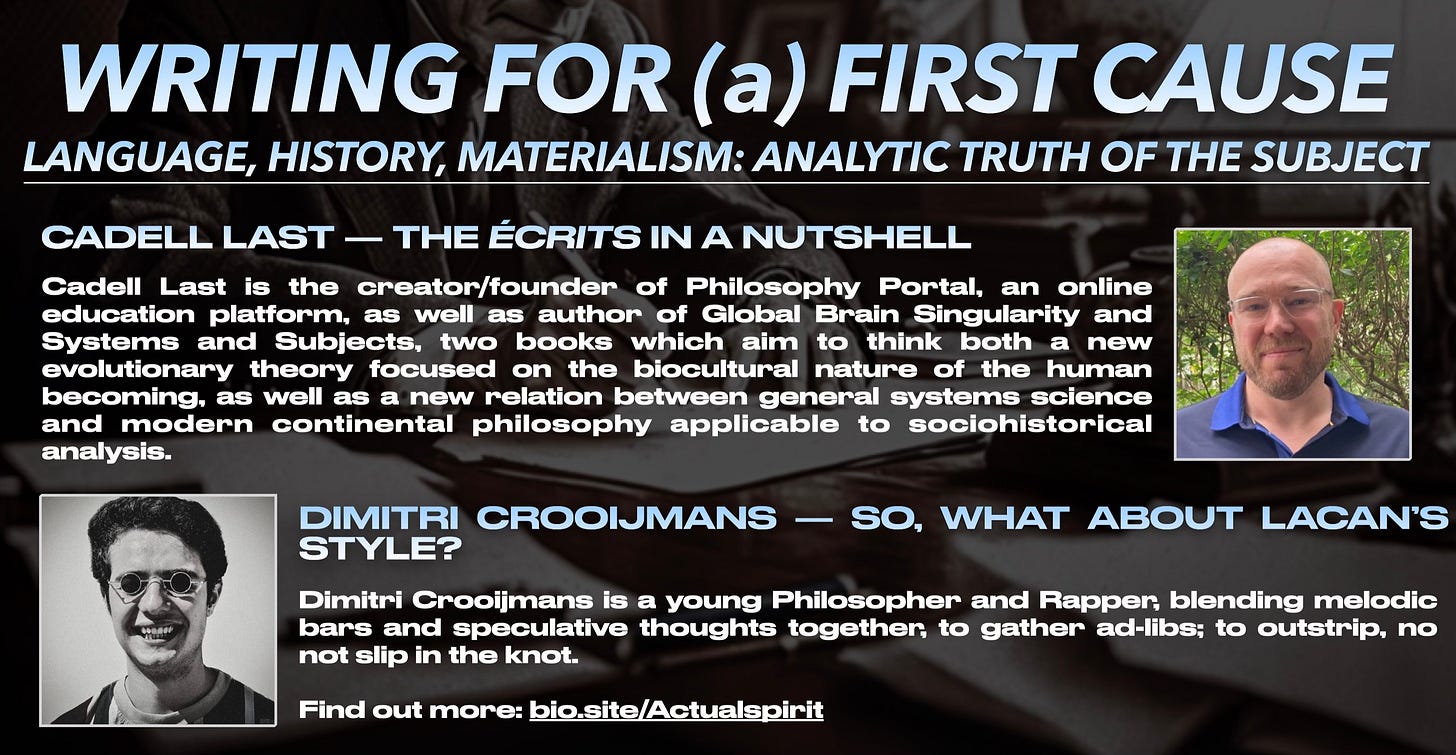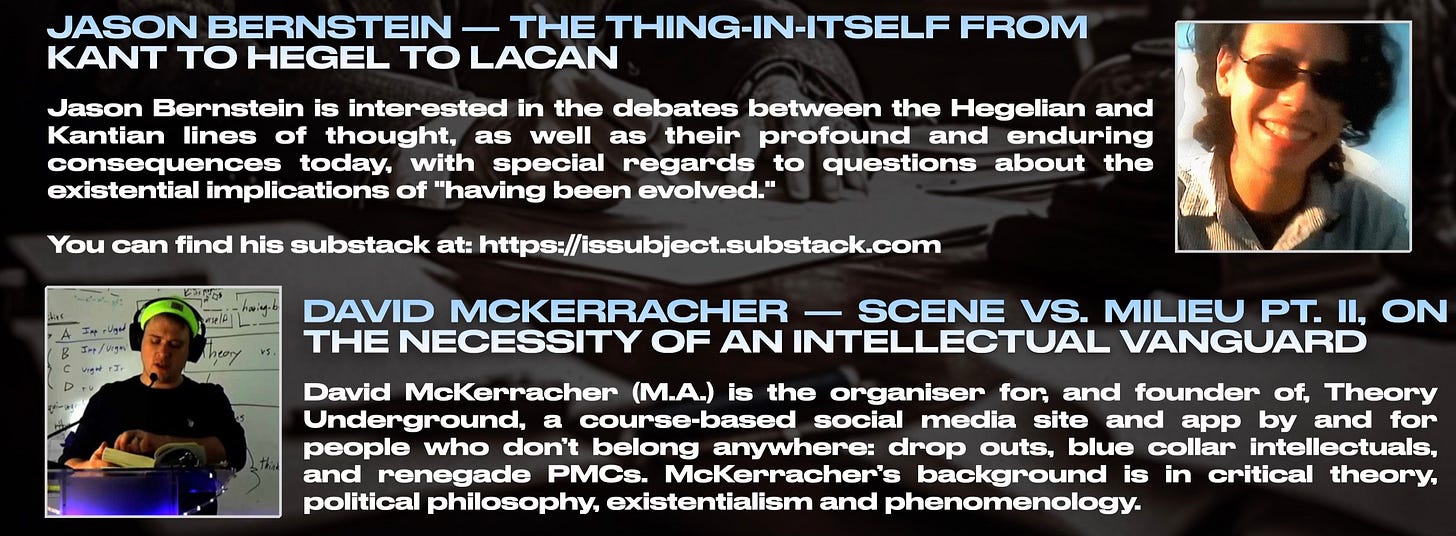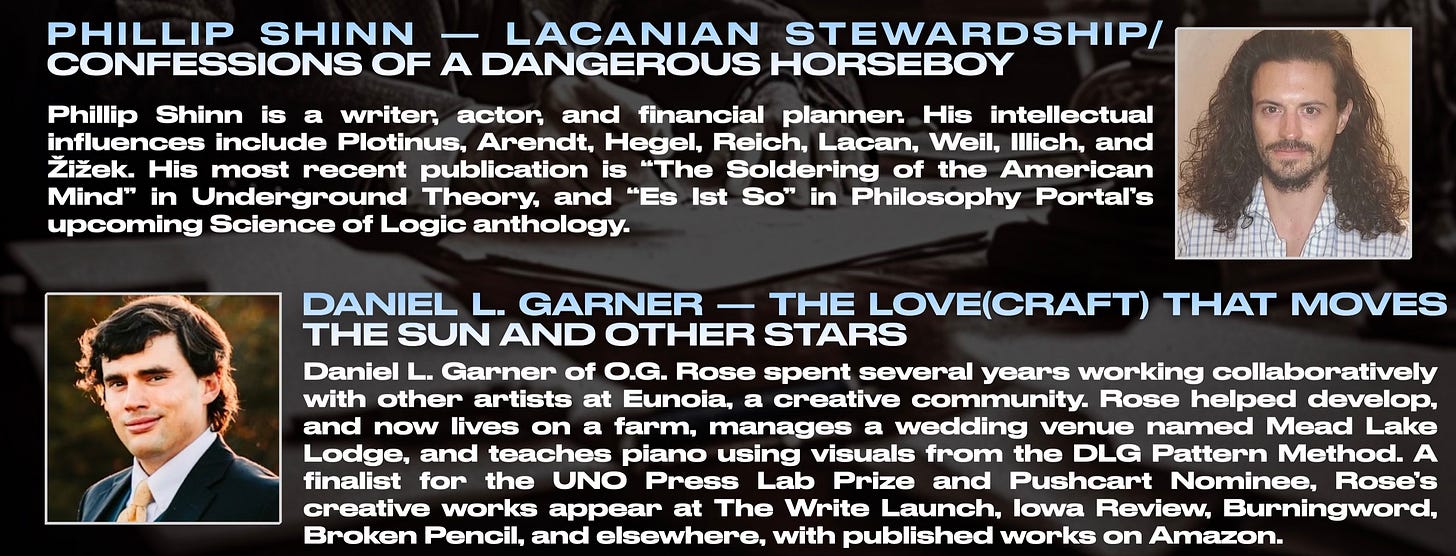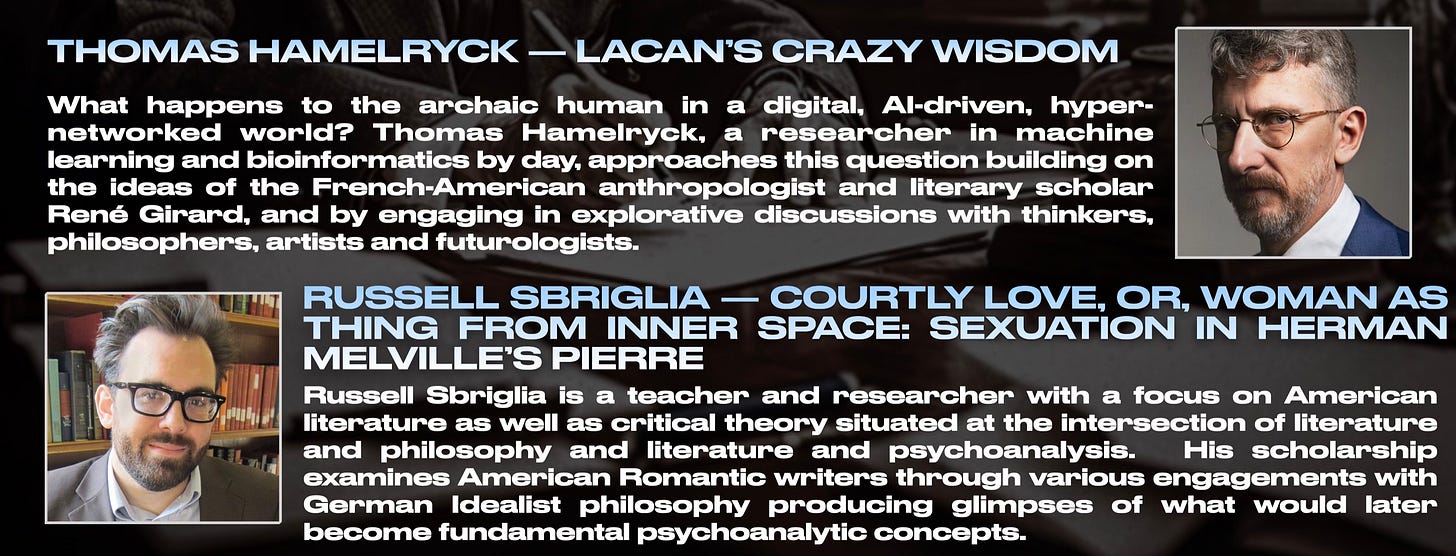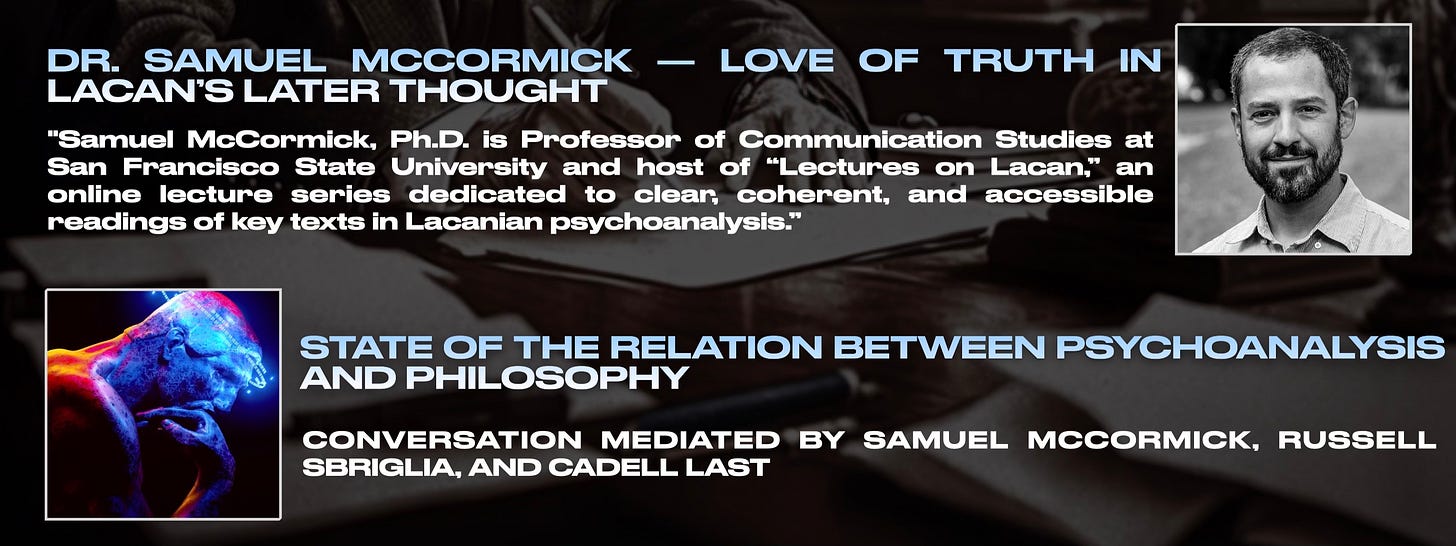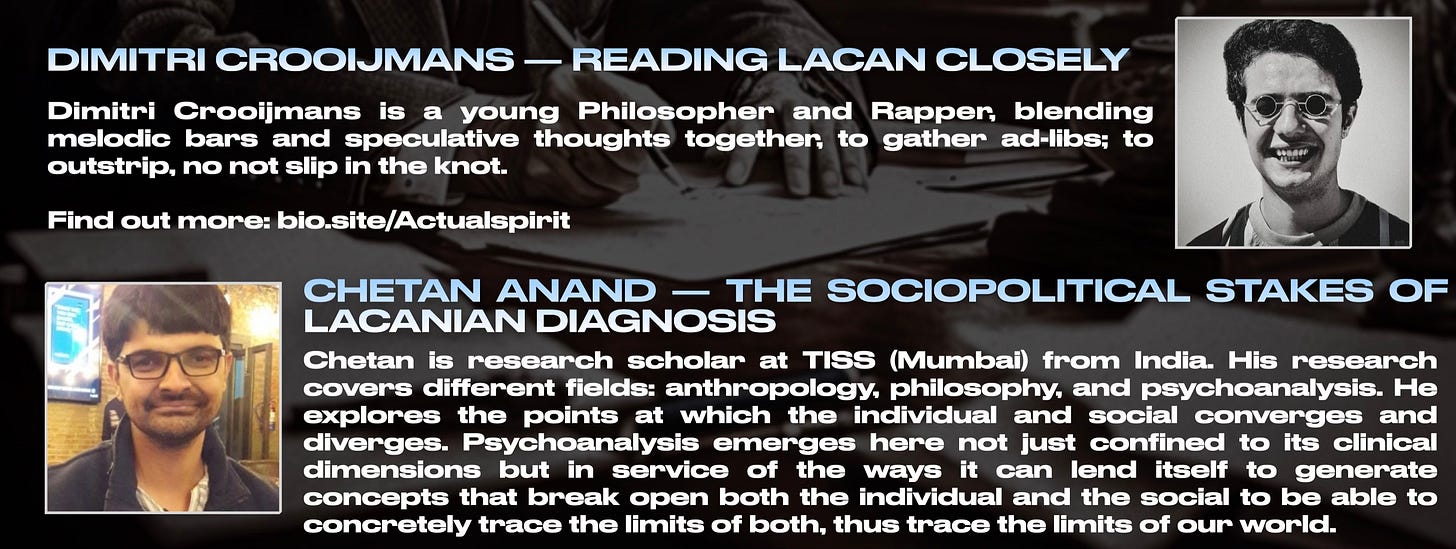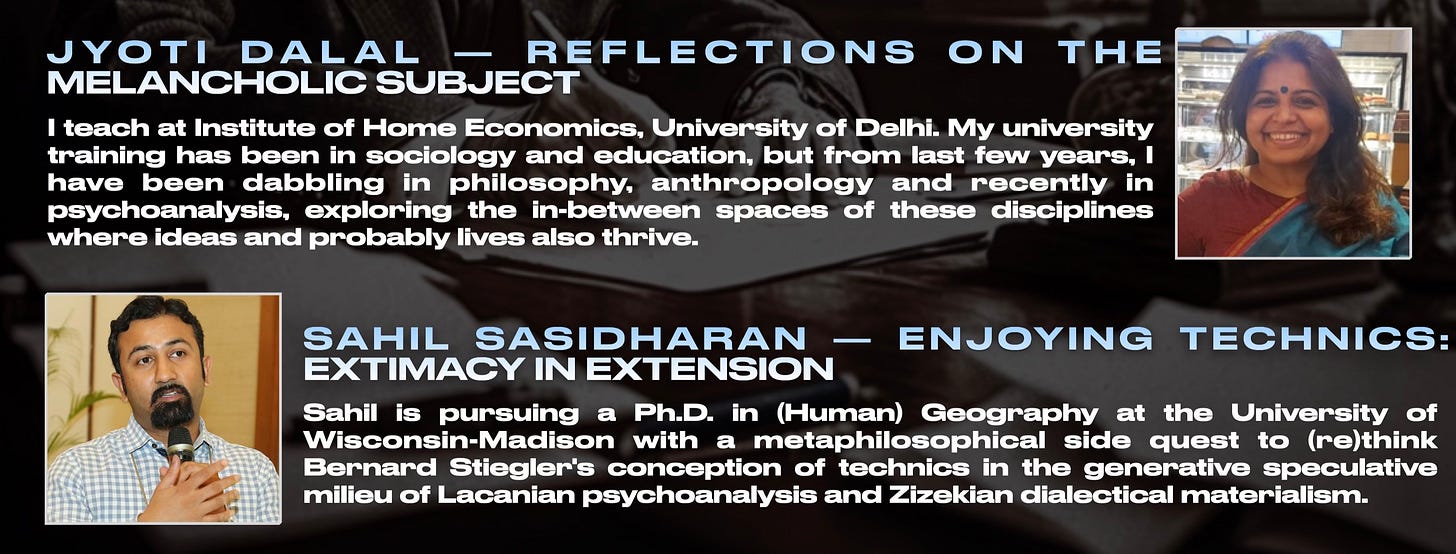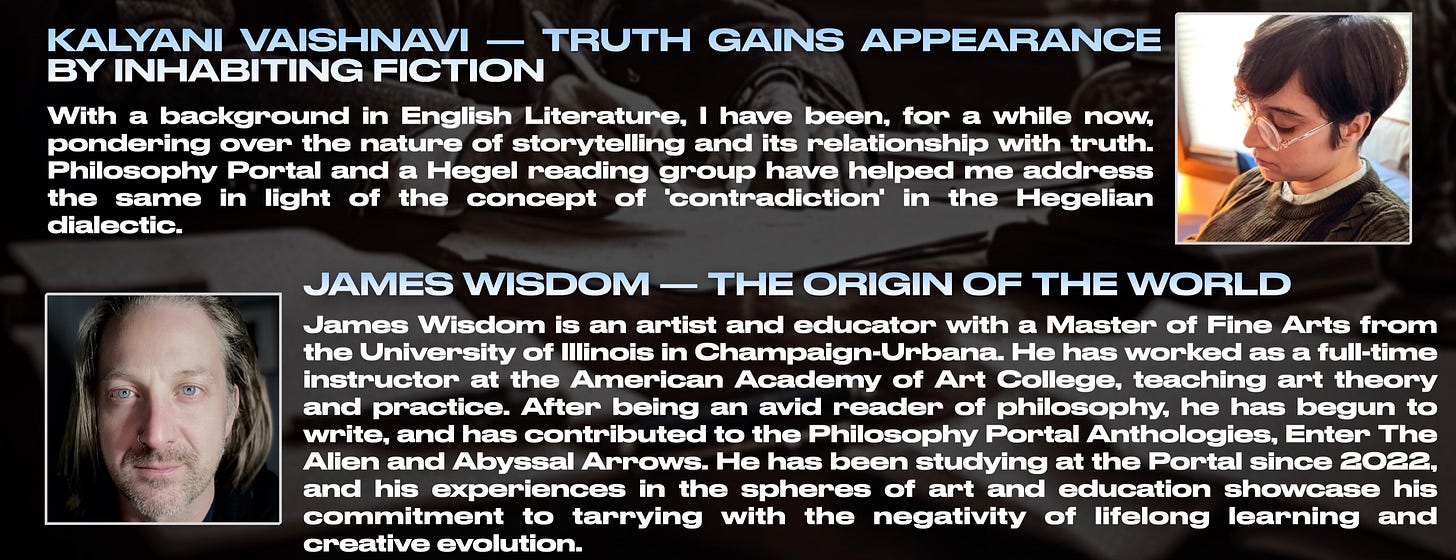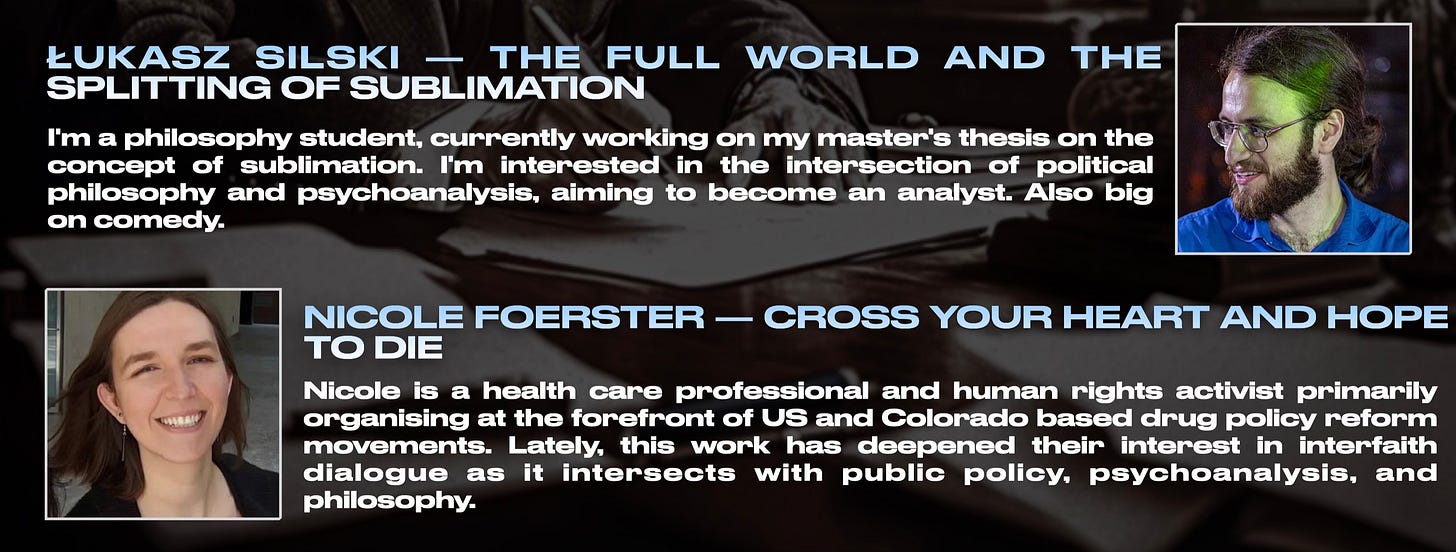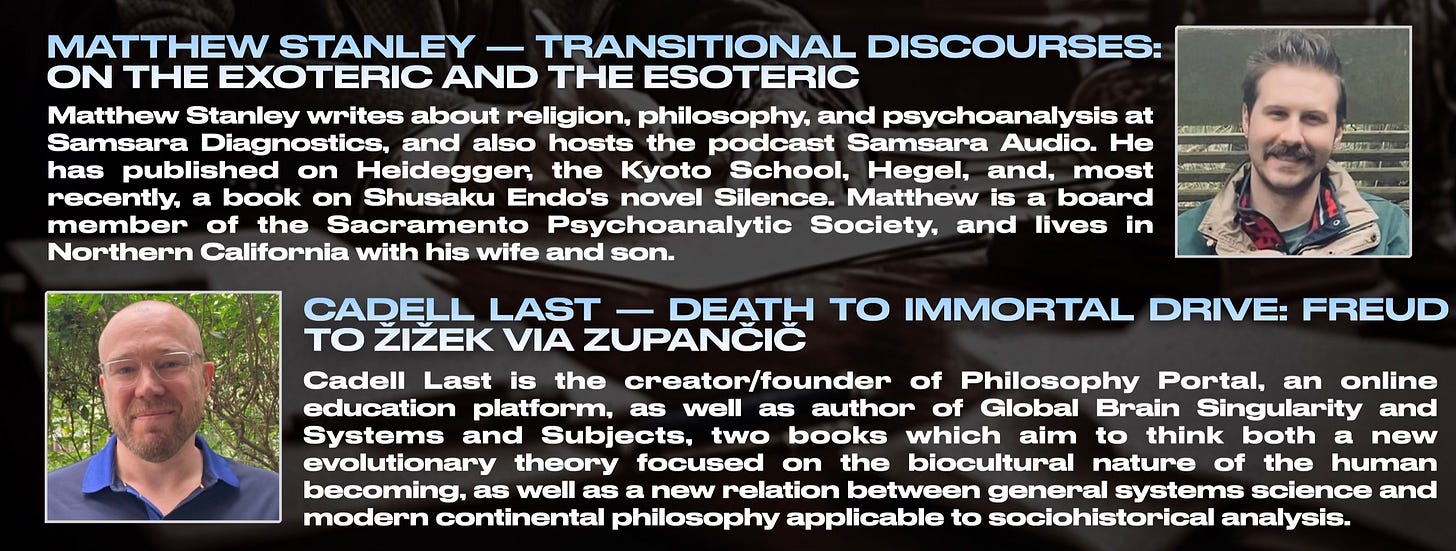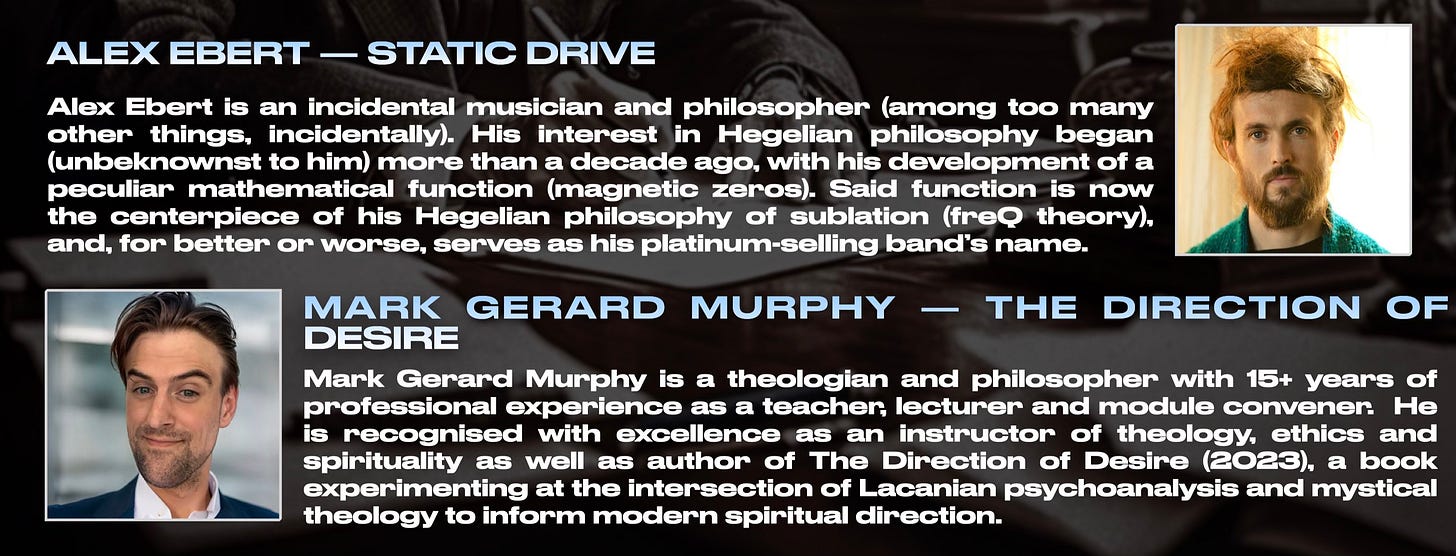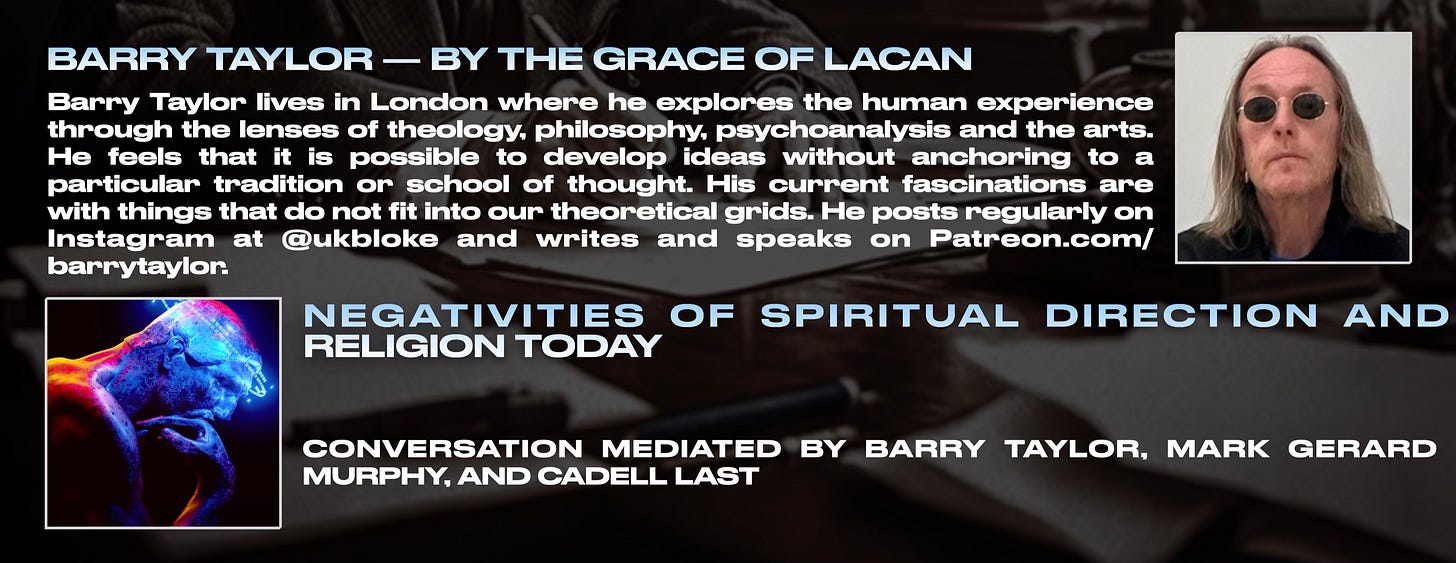This weekend Philosophy Portal will be hosting its fourth conference: Writing For (a) First Cause. To attend the event, simply click on the link for the conference and Register. I will be creating a private mailing list for everyone who attends, so that you have access to what you need access to, to attend the talks that most interest you.
The post below explains the logic for the title of the conference, and further down, introduces you our speakers and the title of their presentations. I will follow up the conference with a more extensive analysis of its results.
Everyone knows Lacan’s Écrits represents his more philosophical writings. Fewer people seem to be aware that Lacan, towards the end of the Écrits, seems to reinvent causality in relation to truth on a structural level in a way that seems very relevant to contemporary philosophical discussions and confusions. Here I am mostly referring to two papers in Section 7: “Position of the Unconscious”1 and “Science and Truth”.2 Consider this most profound statement from “Position of the Unconscious”:3
“It is only as instance of the unconscious, the Freudian unconscious, that one grasps the cause at the level at which someone like Hume attempts to flush it out, which is precisely the level at which it takes on consistency: the retroaction of the signifier in its efficiency, which must be rigorously distinguished from the final cause.
Were we to demonstrate that it is the only true first cause, the apparent discordance of Aristotle’s four causes would, in fact, dissipate; from their terrain, analysts could contribute to this reformation.
They would have the benefit of being able to use the Freudian term “overdetermination” as something other than an evasive answer.”
Lacan is here emphasising that the work of psychoanalysis is about the first cause of the subject being at the level of the signifier, and that if we can only think the logic of substance, and leave out the subject (following Hegel), then we actually miss the cause that actually holds together our relation to all the other forms of causation, i.e. material, efficient, formal, and final.
In “Science and Truth” he goes on to define dialectics/historical materialism, magic, science and religion in terms of the other four causes:
Dialectics = material cause
Magic = efficient cause
Science = formal cause
Religion = final cause
Consider his view on the truth of material cause as dialectic:4
“ the truth of materialism in its two guises — dialectic and history, […] are, in fact, one and the same”
Which leaves something lacking on the level of the truth of the subject:5
“An economic science inspired by Capital does not necessarily lead to its utilisation as a revolutionary power, and history seems to require help from something other than a predictive dialectic.”
Or the truth of efficient cause as magic:6
“Magic involves the truth as cause in its guise as efficient cause.”
His definition:7
“Signifiers in nature are called up by incantatory signifiers. They are metaphorically mobilized. The Thing, insofar as it speaks, answers our insistent prayers.”
Consequently:8
“What must be explained is [magic’s] efficiency.”
As for the truth of science, Lacan collapses the opposition between exact and conjectural (natural/human) into formalism renewed in crisis:9
“The opposition between exact science and conjectural sciences is no longer sustainable once conjecture is subject to exact calculation (using probability) and exactness is merely grounded in a formalism separation axioms and compounding laws from symbols.”
Which also seems to function as a type of extension of or in interesting relation to magic considering Lacan considers these formalisms to be “terribly effective”.10
As for religion, Lacan is clear:11
“Truth in religion is relegated to so-called “eschatological” ends, which is to say that truth appears only as final cause, in the sense that it is deferred to the end-of-the-world judgement.”
While he appreciates many aspects of Christianity specifically (including the Trinity and Filioque), he distances himself from it as a model for analysis:12
“As for religion, it should rather serve us as a model not to be followed, instituting as it does a social hierarchy in which the tradition of a certain relation to truth as cause is preserved.”
He seems most sympathetic, in the end, to science, but recognises in science a fundamental flaw: the suturing of the subject (i.e. the truth of first cause)13:
“Need it be said that in science, as opposed to magic and religion, knowledge is communicated?
It must be stressed that this is not merely because it is usually done, but because the logical form given this knowledge includes a model of communication which sutures the subject it implies.”
In contrast to science, analysis lets this subject speak, i.e. it leaves the lack/gap (division) where it may discover the signifier as first cause.
The strangest thing about analysis, is that the subject matter it finds there, involves a phallic asymmetry, and the most difficult emotions: phobias and fetishes, which seem to both protect us from the void which is the condition for this asymmetry, as well as excites us in a weird secret displacement:14
“Shall I conclude by returning to the point […]: the division of the subject? This point constitutes a knot.
Let us recall that Freud unties the knot in his discussion of the lack of the mother’s penis, where the nature of the phallus is revealed. He tells us that the subject divides here regarding reality, seeing an abyss opening up here against which he protects himself with a phobia, and which he at the same time covers over with a surface upon which he erects a fetish — that is, the existence of the penis as maintained albeit displaced.”
This is all, strangely enough, related to fundamental philosophy. Lacan links this strange web of causation, held together by the first cause, to Plato’s Cave, with the first cause being the crucial exit-entrance of the Cave (where the analyst must position themselves ins service to the drive, and not necessarily in the clinic):15
“My seminar was not “where it speaks”, as people happened to say jokingly. It brought forth the place from which it could speak […] the place in question is the entrance to the cave, towards the exit of which Plato guides us, while one imagines seeing the psychoanalyst entering there.”
The Cave as such being constructed out of the other causes: material (dialectical logic), efficient (magical practice), formal (scientific formalism), and final cause (religious belief).
While dialectics, magic, science, and religion busy themselves with the movement of substance (its materiality, efficiency, form, and finality), analysis concerns itself with being a type of midwife of subjectivity, a place where via speech, the subject can reinterpret its past and re-vision its future in the presence of lack and the signifier. Here is my representation of Lacan’s vision, as presented in the official Philosophy Portal course on the Écrits:
Lacan asks us to consider the type of being that we encounter there:16
“But what is the being that responds to us, operating in the field of speech and language, from shy of the cave’s entrance?”
He suggests that it is, for philosophy, a quite familiar being, that is the strange being that we find in Plato’s Symposium:17
“let us recall [Aristophanes] primitive double-backed creatures in which two halves are fused together as firmly as those of a Magdeburg sphere; the halves, separated later by a surgical operation arising from Zeus’ jealousy, represent the beings we have become in love, starving for our unfindable complement.”
Hopefully this weekend, at the fourth Philosophy Portal conference, Writing For (a) First Cause, we will open up a space where this dimension of the subject may be thought: where psychoanalysis meets philosophy, and where philosophy meets psychoanalysis.
DAY 1: ft.
of , Jason Bernstein of , David McKerracher of , of , Owen Cox of , Davide Pasti, Edie Hitchcock, Phillip Shinn, Daniel L. Garner of , Thomas Hamelryck, Russell Sbriglia, ofDAY 2:
of , , Jyoti Dalal, Sahil Sasidharan, Kalyani Vaishnavi, , Łukasz Silski, Nicole Foerster, of , , Mark Gerard Murphy, Barry TaylorThe action all starts this Saturday. Hope to see you there!
Lacan, J. 2005. Position of the Unconscious. In: Écrits: The First Complete Edition in English. New York: W.W. Norton & Company. p. 703-721.
Lacan, J. 2005. Science and Truth. In: Écrits: The First Complete Edition in English. New York: W.W. Norton & Company. p. 726-745.
Lacan, J. 2005. Position of the Unconscious. In: Écrits: The First Complete Edition in English. New York: W.W. Norton & Company. p. 712.
Lacan, J. 2005. Science and Truth. In: Écrits: The First Complete Edition in English. New York: W.W. Norton & Company. p. 738.
Ibid.
Ibid. p. 740.
Ibid. p. 739.
Ibid. p. 744.
Ibid. p. 733.
Ibid.
Ibid. p. 741.
Ibid. p. 744.
Ibid.
Ibid. p. 744-5.
Lacan, J. 2005. Position of the Unconscious. In: Écrits: The First Complete Edition in English. New York: W.W. Norton & Company. p. 3.. p. 711.
Ibid. p. 716.
Ibid. p. 716-7.


